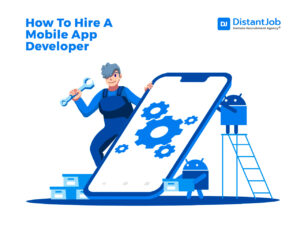Employer of Record (EOR) and Professional Employer Organization (PEO) offer distinct approaches when it comes to managing employees and handling HR tasks. While both offer useful solutions, they diverge in the role: EOR assumes legal employer status for a company’s remote workforce, while PEO shares employer responsibilities and co-employment with the client.
Knowing the differences between EOR vs PEO is key, as both involve different management aspects and operational requirements. To effectively hire globally, choosing between EOR and PEO boils down to your business objectives, requirements, and global expansion ambitions.
In this article, we’ll explore the fundamental differences between EOR and PEO, helping you grasp how both strategies can impact your business and providing guidance to select the most suitable option for your needs.
What is EOR?
EOR is a third-party organization that employs workers on behalf of another company, taking the responsibility of managing tasks related to payroll processing, tax withholding, and other HR-related functions.
If you want to hire internationally, you need to have a legal jurisdiction in the countries you’re looking to hire. If you don’t, then opting for EOR services will allow you to manage remote employees, ensuring your business is in compliance with local labor laws, regulations and requirements.
The main responsibilities of EOR include:
- Payroll
- Taxes
- Benefits administration
- Risk mitigation
- Onboarding and offboarding
What is PEO?
A PEO is a company that partners with small and medium-sized enterprises by providing comprehensive HR solutions. They act as an outsourced HR department. PEOs work with companies that need to handle different HR functions and compliance with employment laws.
Their main responsibilities include:
- Payroll processing
- Benefit administration
- Tax filings
EOR vs PEO: 5 Key Differences
At a simple glance, EOR and PEO seem to offer similar services. However, they have 4 key differences that set them apart.
1. Employment Structure
An EOR is the legal employer of your company’s international employees. This means they take on all the employment-related responsibilities, including compliance with labor laws, benefits, taxes, etc.
On the other hand, a PEO is a co-employer. While you have control over day-to-day operations, the PEO shares employer responsibilities, such as payroll administration, benefits, and HR compliance.
2. Legal Structure
As EOR directly employs workers on behalf of your company, they assume all legal obligations associated with employment.
In a PEO arrangement, both your company and the PEO share these responsibilities.
3. Control and Flexibility
When working with EOR, you usually have less control over HR functions, as they manage most aspects of employment.
With a PEO, as it’s a co-employment relationship, you share responsibilities; however, PEO focuses more on HR management while you control day-to-day operations.
4. Risk
One major benefit of working with an EOR is that as they are the legal employer of your remote workforce, they assume all the risks and liabilities associated with the services they provide.
This doesn’t happen with PEO, as they’re co-employes, which means your company can have exposure to employment liabilities.
5. Scope
An EOR partner has in-depth knowledge of local hiring practices and laws in various locations, which makes it ideal for businesses that want to hire global talent. As they act as the legal employer, they assume the responsibility of following relevant labor laws and regulations in each location where your workforce is employed.
On the other hand, a PEO partner provides HR services in locations where your company has a legal identity. Since the PEO doesn’t directly employ your workforce, your company is responsible for ensuring labor laws specific to each location.
How to Decide Between EOR or PEO?
In essence, both EOR and PEO focus on providing your company with HR services, including tax compliance, payroll, benefit administration, etc. However, the choice between one or the other comes down to the following factors:
Level of Expansion
If you’re looking to expand your company internationally, then PEO won’t work for you unless you have a legal identity in the place you’re looking to hire employees from.
EOR is the best solution for companies looking to hire international talent legally, as they are legal employers.
Level of Control
For companies that want to get rid of administrative burdens and delegate such tasks to a third party, EORs are the solution.
If you still want to have more control over HR processes and overall employee management, then a PEO can work better for you as they act as co-employers.
HR Needs
If your primary concern is to make sure your business is compliant with local labor laws as well as HR regulations in multiple locations, you’ll benefit more by working with an EOR.
On the other hand, PEOs typically offer a broader range of HR services, including employee training and compliance assistance. This is useful if your company needs comprehensive HR support.
Expand Your Team With The Right Strategy
EOR and PEO are reliable approaches to managing employees and HR tasks seamlessly. Generally, EOR is ideal for businesses looking to expand globally while mitigating risks associated with payroll and legal responsibilities. On the other hand, PEOs offer comprehensive HR solutions partnering with your company.
If you’re looking to expand your team with talented remote developers, we can help. We’re an all-in-one recruitment and EOR solution, offering businesses the opportunity to scale their teams with global developers in just one click.
With our 3-Tier Approval Process, we meticulously vet candidates, beginning with a detailed assessment of client needs, followed by strategic sourcing and thorough review. Our EOR services enable us to hire international developers for you, allowing you to focus solely on your core business operations.
Want to know more? Let’s talk.



